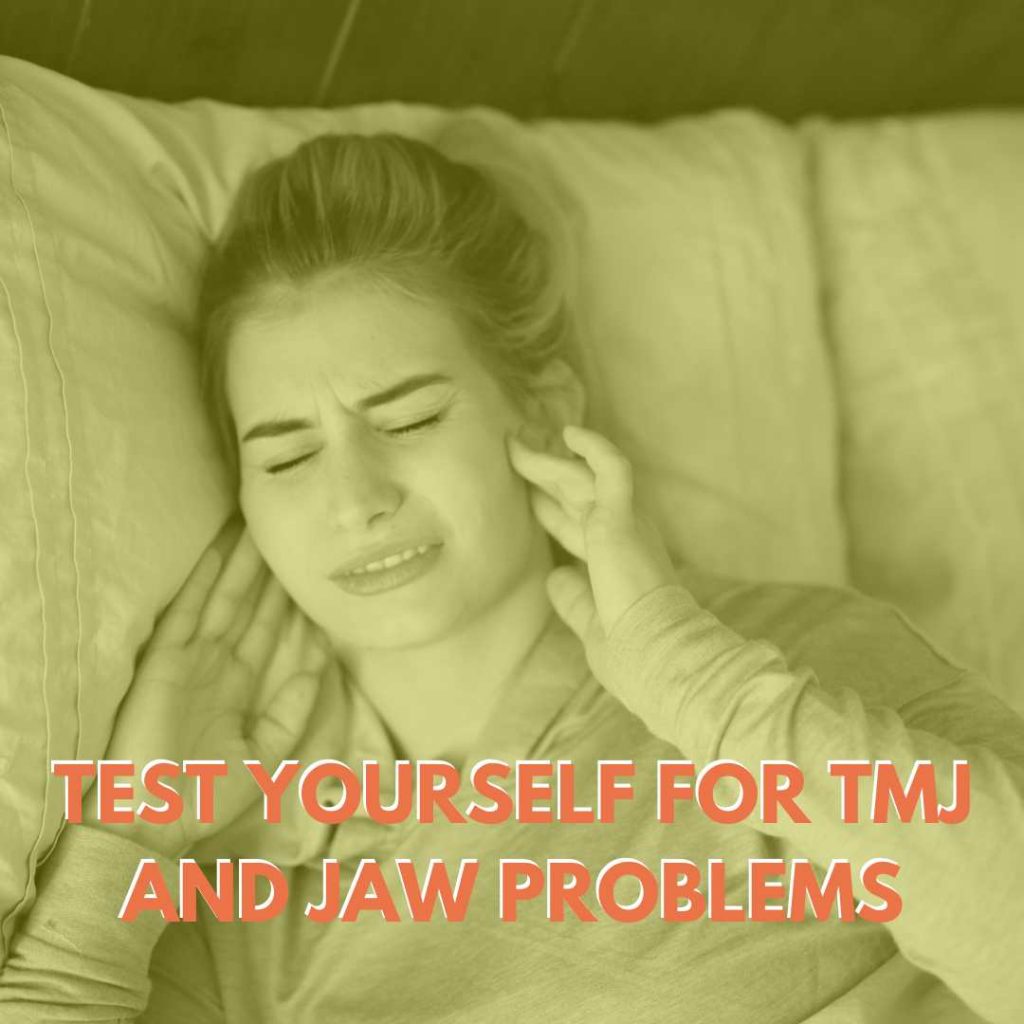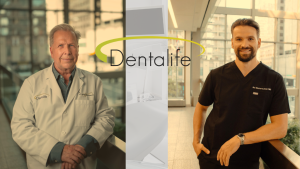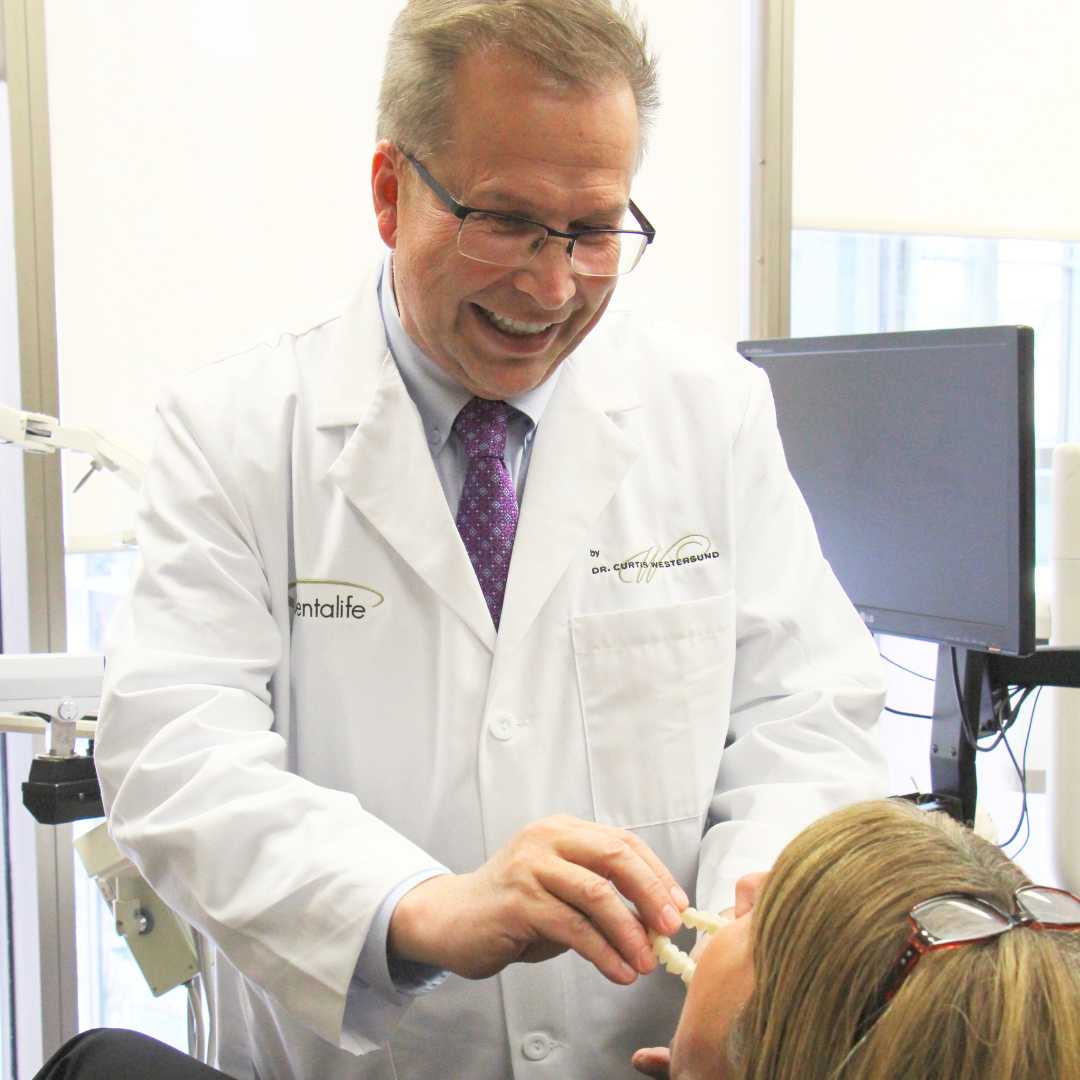Pain can be a significant indicator for Tempomandibular Joint Disorder (TMJ disorder or TMD) but it is not the only signal.
Years of poor or bad posture, wearing teeth, damage to jaw joints, neck vertebrae, loss of the bone and gum tissue around the roots of your teeth, are often slow destructive processes without severe pain or other problems in an early stage.
Without realizing the impact of the strain, your overbite can contribute to some or all of these symptoms.
Often times, an overbite is caused by a misaligned jaw or TMJ disorder.
Complications that come with an overbite
- The slightest imbalance in the way your teeth bite and function (also known as occlusion) can result in headaches, dizziness, nausea, pain related to temporomandibular joint (TMJ) and premature wearing of your teeth.
- It can contribute to poor posture. In particular, Forward Head Posture.
- It can cause a decrease in strength and flexibility.
Do you have an overbite?
A “GOOD BITE”
Abnormal jaw growth and TMJ
In a healthy mouth, an overbite of 1 – 2 mm of the upper teeth over the lower teeth is natural. Anything more than that increases the likelihood that your bite is unhealthy.
Why is this important?
Deep overbites mean the lower jaw must stay back from a more natural position so that the upper and lower teeth can mesh together. This is often caused by the upper dental arch being too narrow or too short for the lower dental arch to be able to fit ideally.
A “BAD BITE”
Overbites not only create muscle tension but also compress the jaw joint into an unhealthy position. Some of the most advanced jaw joint erosions are in patients with a deep overbite.
If this is the case with your bite, you may have a misaligned jaw and may signify TMJ disorder.
What is your posture like?
How bad overbites can lead Forward Head Posture
Your tongue is attached to your lower jaw. If you have an overbite that forces your lower jaw to move backwards, your tongue goes with it.
The relationship with posture and bite
- Your tongue can block your airway. To accommodate the tongue sitting back in the throat, you will have to hold your head forward to assist your breathing. This is not a good thing.
- Heads are heavy. In fact, heads are between 8 to 16 pounds. This means that a Forward Head Posture (FHP) that opens up your airway also strains the muscles of the back of the head, neck, and shoulders creating neck pain and neck aches.
More about Forward Head Posture (FHP)

Forward Head Posture (FHP) is a description of a postural problem where your head is not centered or balanced over your shoulders.
It causes strain and pain and over time the strain caused the build up of scar tissue at the base of the neck that was commonly called “Dowagers Hump” in old England.
This is because your head weighs between 8 to 16 pounds. Think of a 15 pound barbell you may use in the gym for a workout. Now think of holding that barbell being in front of you for the rest of your life.
- The strain of FHP causes a build up of muscle and connective tissue at the base of the neck.
- It causes your spine to have unnatural curves that can affect your body all the way to the tips of your toes.
- Your neck vertebrae are too straight, your shoulders hunch forward, your upper back is over bent, your torso (your chest and tummy) are too far forward and your backside is sticking too far back. All to accommodate the stress and strain of a head that is out of position.
FHP can also create changes in the neck (Cervical) vertebrae and the disks between the vertebrae causing irreversible harm. Limited mobility due to skeletal or muscle changes is often the result.
To learn more about Forward Head Posture and how TMJ disorder affects posture, click here.

Help for your overbite in Calgary
The relationship between the teeth, gums, bones, joints, muscles, and ligaments in the head and neck is an intricate one. An issue with one member often leads to pain or discomfort in another.
We are all one active, kinetic body. Strain in one area affects all areas.
At my downtown Calgary dental clinic, I use a neuromuscular or physiologic “alignment first” approach to treat TMJ Disorder. This means no surgery is required to relieve your TMJ pain issues.
No part of the body works in isolation so a coordinated effort works best at finding solutions. We have a coordinated team who works at providing you effective therapy and treatment.
Chronic pain affects many people. But with some assistance from dental and healthcare providers, your pain can often be significantly reduced.
If you suspect you have an overbite, please call my downtown Calgary office or send us a message regarding your concerns. You can also fill out a TMJ Questionnaire and we’ll get back to you with our recommendations.
My team will be happy to discuss relief for your overbite and its accompanying symptoms.
Dr. Curtis Westersund – dentist Calgary, TMJ treatment provider




